Idaho: Yes, as the license plates say, it’s famous for potatoes. With that out of the way, we can move on to more interesting matters, no disrespect to the potato. Idaho boasts more than 20.4 million acres of national forest, covering nearly 40 percent of the state. Bordering Montana, Wyoming, Utah, Nevada, Oregon, Washington and Canada—the transition point between the Intermountain West and the Pacific Northwest—Idaho offers a sampler platter of what all those states are known for. High mountain peaks, lush forests, hot springs, geologic formations, wineries and hundreds of miles of whitewater are just a few of its attractions. So you don’t get lost, we’ve made a list of some of the less-heralded, hidden treasures along Idaho’s many scenic byways.
Pioneer Historic Byway
Where: Southeast Idaho
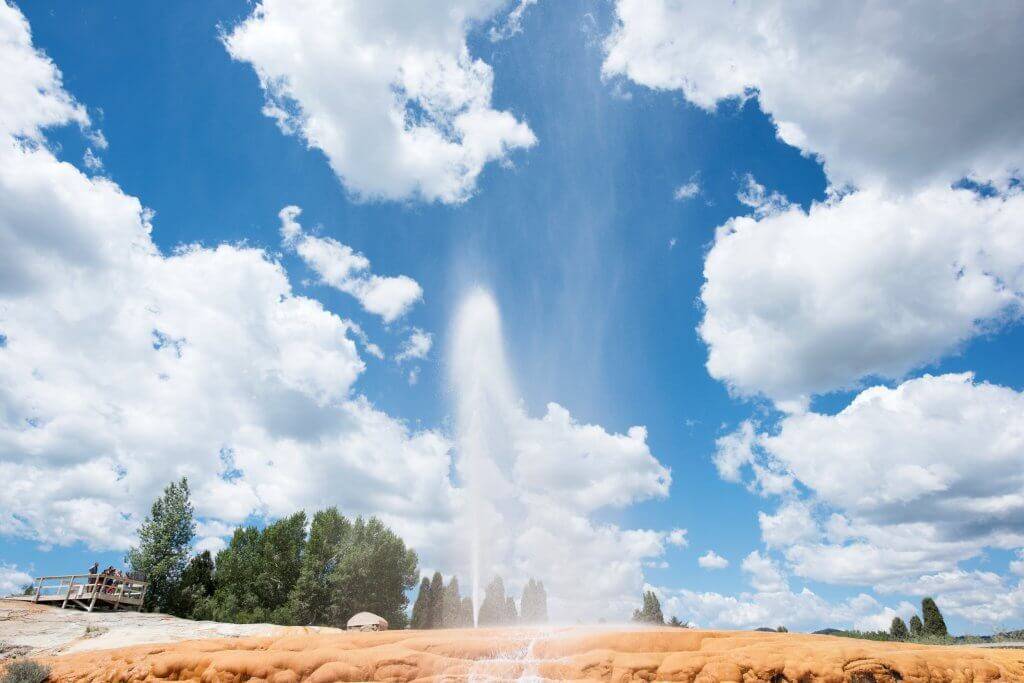
The Pioneer Historic Byway, located in southeastern Idaho, cuts through an area that includes part of the Oregon Trail, as well as areas settled by Mormon pioneers. Following the byway through the Gem Valley and Caribou Highlands, you’ll wind through a land shaped by volcanic activity. As you pass by dormant volcanoes and lava flows, you can check out the historic town of Chesterfield.
Back in the 1880s, this was a bustling little town, but it’s a ghost town these days. Settled by Mormon pioneers as an agricultural community, its population slowly dwindled. Today many of the buildings have been restored and a museum offers insight into the lives of those early settlers.
Up the road is the town of Soda Springs. This town has a naturally carbonated spring called Hooper Springs, where you can try a sip of naturally sparkling water straight from the source. Then head downtown to catch the Soda Springs Geyser erupting every hour on the hour. In the 1930s a local resident, drilling to find water for a swimming pool, set off a water spout that flooded downtown. Now capped with a valve and released each hour, the geyser sprays about 100 feet into the air. Park toward the back because the hard water can dirty up your car.
Venture up State Road 34 is Grays Lake National Wildlife Refuge, a protected and preserved area of natural marshland, the type preferred by waterfowl, including the sandhill crane. This wildlife refuge hosts one of the largest groups of nesting sandhill cranes in the world. If you’re a birder or wildlife enthusiast, this is a must-see during spring nesting and fall migration.
Sacajawea Historic Byway
Where: Central Idaho
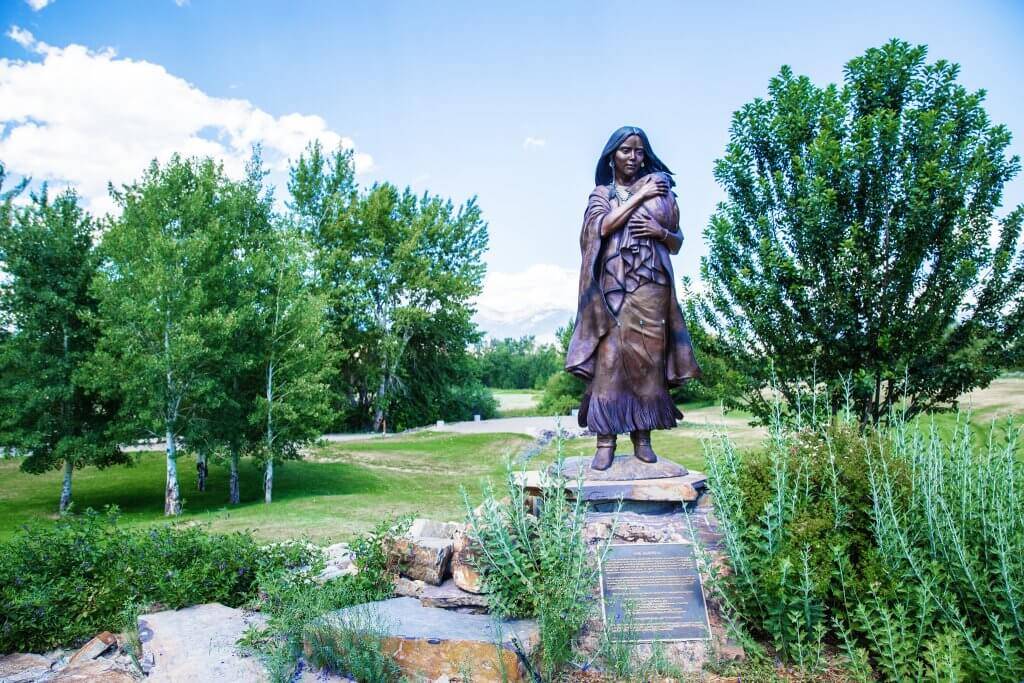
Sacajawea, the legendary Agai’dika Shoshone-Bannock woman who guided the Lewis and Clark expedition, was a native of what is now Idaho.
Visit the Sacajawea Interpretive, Cultural & Educational Center to view exhibits about Sacajawea’s life and her people. You can follow walking trails and attend programs about the Lewis and Clark Expedition.
Down the road in Leadore, you’ll be greeted by the surreal site of what looks like beehives sitting by the road. These are large kilns constructed to create charcoal for the smelters used in the processing of silver and lead. The kilns are 20 feet high and 20 feet wide and have been restored to their original condition.
The town of Franklin is the oldest permanent European settlement in Idaho, founded in 1860 by Mormon pioneers. If you remember the movie Napoleon Dynamite, many of its scenes were filmed in Franklin, as well as in nearby Preston. Visit the Franklin Historical District to see many of the original buildings, along with the Relic Hall, a log building that houses the museum of local history.
Western Heritage Historic Byway
Where: Southwest Idaho
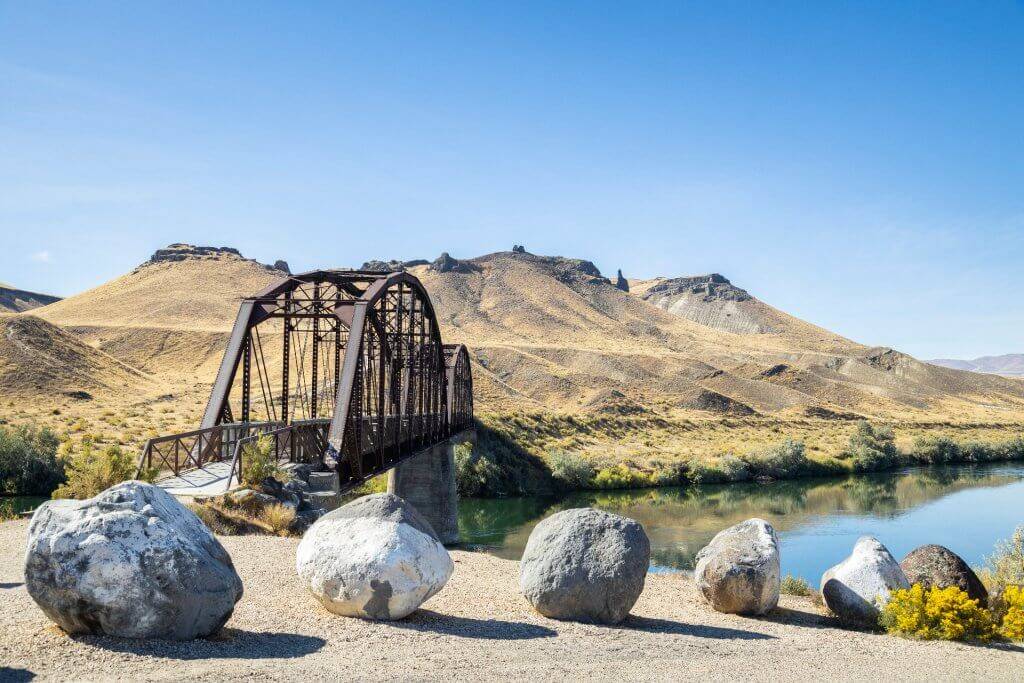
About an hour’s drive outside Boise is one of the world’s largest nesting sites for birds of prey. Located in the Snake River Canyon, the Morley Nelson Snake River Birds of Prey National Conservation Area is home to more than 800 pairs of eagles, hawks and other birds of prey. Thermal updrafts and the many cracks and ledges in the 700-foot cliffs overlooking the Snake River combine to form the perfect habitat for these raptors. The conservation area covers about 485,000 acres and provides ample opportunity for hiking and camping. The best time to see these birds is March through June when young birds are learning to fly.
Celebration Park is the first archeological park in Idaho. Located about 30 miles from the Conservation Area, this park has 12,000 petroglyphs and rock carvings from 100 to 10,000 years old. Tours are available from the visitor’s center, which is open daily from 10 a.m. to 2 p.m. While there, visit the atlatl range to see how far you can hurl darts with an atlatl, an ancient weapon that resembles a wooden rod.
About 20 miles up the road you’ll find another archeological relic: Map Rock, a large boulder covered with art created by the Northern Shoshone people. Many interpretations of Map Rock exist. Some believe it is a simple map of the surrounding area, and others believe it may chart the migration patterns of various types of wildlife.
Salmon River Scenic Byway
Where: Central Idaho
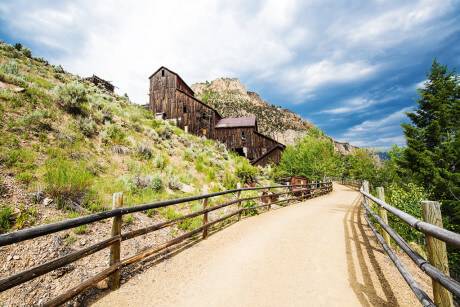
Central Idaho witnessed a great deal of mining activity during the late 1800s and is now peppered with many ghost towns. You can find several in the Land of the Yankee Fork State Park complex, including the town of Custer which is on the National Register of Historic Places. Explore the numerous restored buildings and remnants of historic mining equipment. You can even try your hand at panning for gold. Be sure you check out the gold dredge, a huge piece of machinery and one of the best-preserved dredges in the country. If you time your trip for mid-July, you can join in the fun at the Annual Custer Day celebration which has shoot-out reenactments and other activities. Round out your trip with two more nearby ghost towns, Bonanza and Bayhorse.
Insider Tip: The roads to the ghost towns aren’t paved, and you may want a high-clearance vehicle to get to them. Contact the park for current road conditions.
Stop at the interpretive center in Challis to see exhibits about the area’s mining history and an area where you can pan for gold.
If outdoor adventure is what you crave, Stanley, about an hour’s drive south of Challis, is a picturesque spot. Surrounded by the Sawtooth, Lost River and White Cloud mountain ranges, this small town offers breathtaking views along with all the classics of outdoor recreation. Fishing, hiking, whitewater rafting, mountain biking, stargazing and camping are just a few of your options.
City of Rocks Backcountry Byway
Where: Southern Idaho
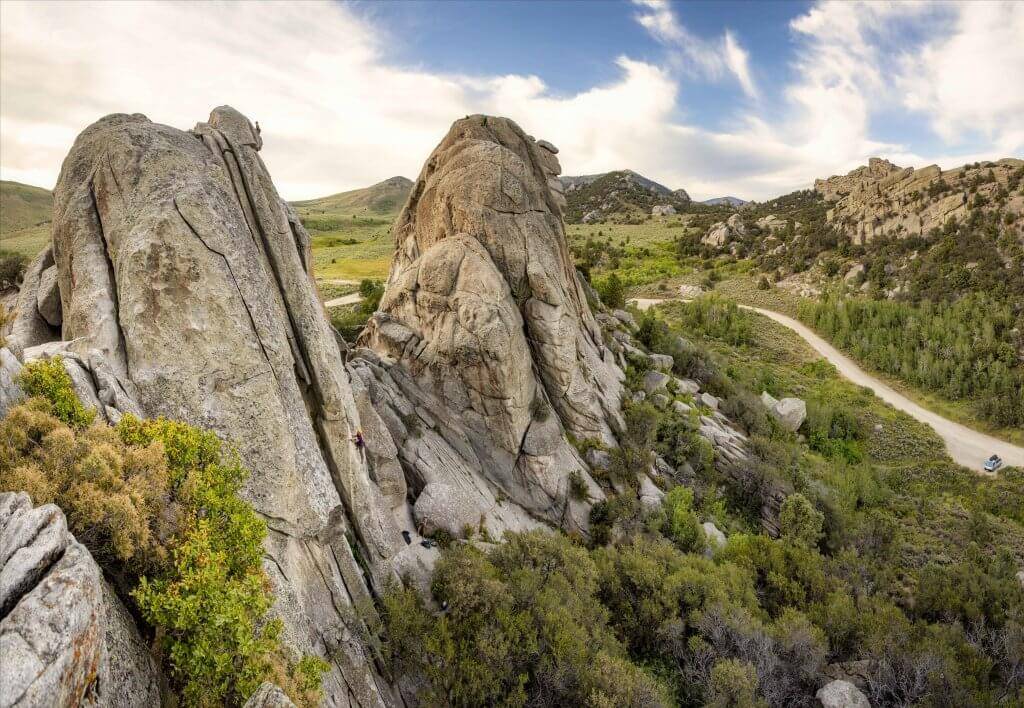
Located in south central Idaho near the border with Utah, the City of Rocks Backcountry Byway offers a combination of geological wonder and history. If you’re a rock climber, this area is definitely one to check out.
City of Rocks is a national reserve filled with granite spires, some 60 stories tall. Rock climbers from across the world travel here to try the challenging routes. While you’re here, plan to stop at Camp Rock, which still bears the signatures of emigrants who passed through the area on their westward journey.
With many more rock formations, nearby Castle Rocks State Park might offer a better option for beginners or moderate climbers. This park also provides many trails for non-climbers. If you’re looking for a unique place to stay overnight, Castle Rocks has you covered with the Lodge or Willow Glamping Yurt.
If climbing and carabiners aren’t your things, stop at the small town of Oakley. This entire town is listed on the National Register of Historic Places for its well-preserved collection of old stone and brick buildings dating back to the late 1800s when Mormons settled the area. Guided tours of some of the old houses are offered during the summer.
Northwest Passage Scenic Byway
Where: North Central Idaho
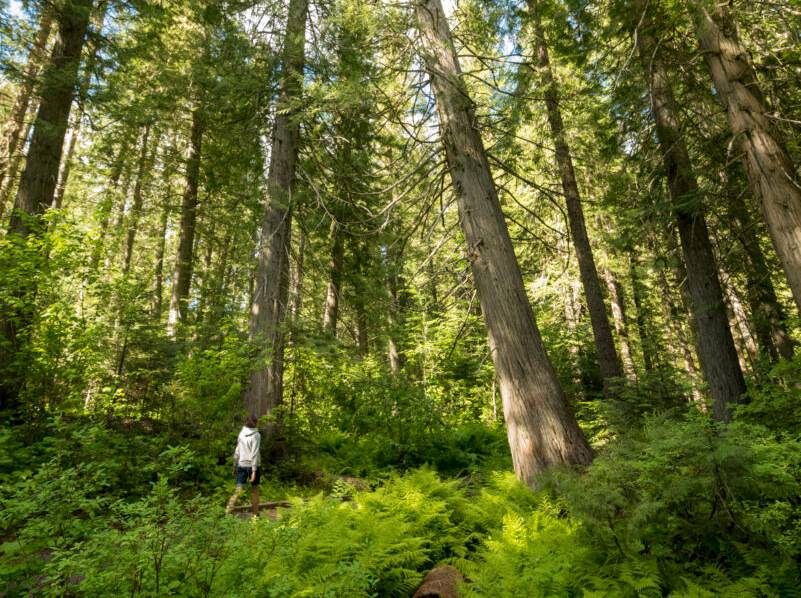
Following the path of the Lewis and Clark expedition, the Northwest Passage Scenic Byway takes the prize as the longest byway in the state, winding over 200 miles through beautiful mountains and along rivers.
The DeVoto Cedar Grove is a must-see stop on this route. Located in the Bitterroot Mountains where the Clearwater River meets the Snake River, the grove is filled with ancient trees, some a thousand years old and many over 100 feet tall. There are trails and picnic areas by the grove, making it a great spot to stop and relax as you continue your drive.
The Nez Perce National Historical Park Visitor Center is located in Spalding, the site of one of the original missions in this part of the state. The visitor center exhibits include a film about the Nez Perce, or Niimipuu, tribe. Several trails take you through the historic district, which showcases many preserved buildings from the original town of Spalding.
Up the road, you’ll find Canoe Camp, a site along the Clearwater River that commemorates the spot where the Lewis and Clark expedition met with the local Nez Perce people and worked to carve canoes that would take them to the Pacific. A short trail circles through the camp.
If you pass through Grangeville, take a few minutes to stop at the Mammoth exhibit behind the Chamber of Commerce. In the 1990s, mammoth bones were discovered in nearby Tolo Lake, and soon paleontologists unearthed more than 200 skeletons. The exhibit features a replica of a mammoth skeleton.
White Pine Scenic Byway
Where: Northern Idaho
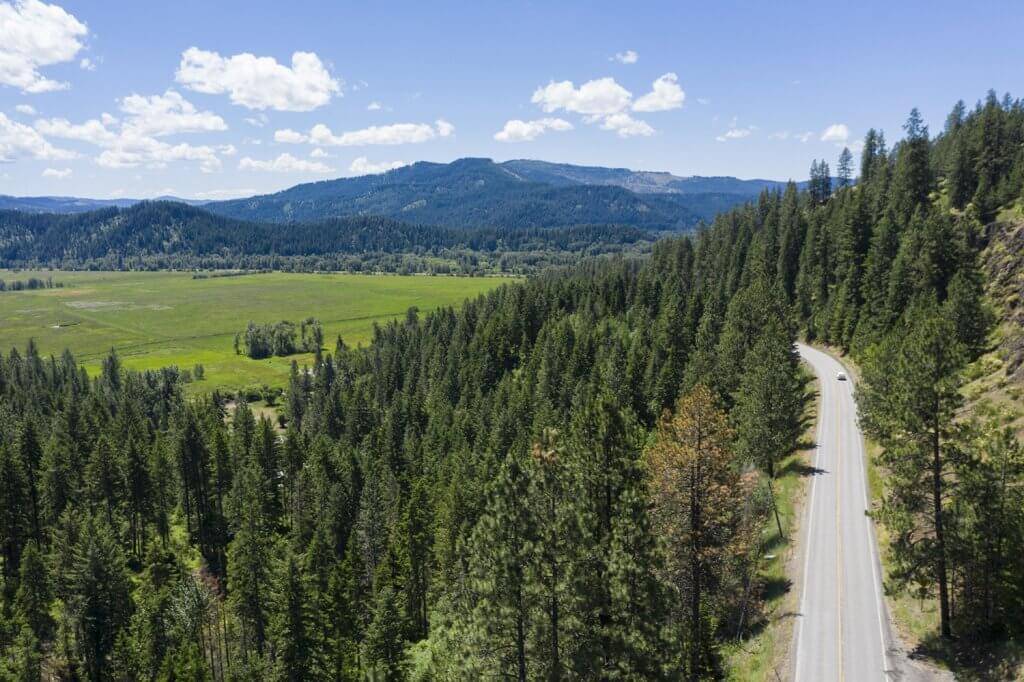
Located in the northern Idaho Panhandle, the White Pine Scenic Byway takes you through scenic pine forests and historic attractions related to the early European settlement of the area.
Located outside the city of Coeur d’Alene, Coeur d’Alene’s Old Mission State Park spotlights the oldest building in the state. Built in the 1850s, the Mission of the Sacred Heart sits atop a hill and was once surrounded by a small village. Visitors may explore the mission, nearby Parrish House and cemeteries, and see the award-winning exhibition Sacred Encounters: Father De Smet & the Indians of the Rocky Mountain West at the Visitor Center for an additional fee.
The nearby Trail of the Coeur d’Alenes is regarded as one of the most beautiful trails in the state. Spanning the entire Idaho Panhandle, this paved trail is ideal for bicycling, skating, walking and running. It is one of the easiest, most accessible ways to enjoy the beauty of the Panhandle. The trail is 73 miles long and has many access points, so pick your favorite section, or plan ahead to travel its entire length.
Another interesting site can be found around Marble Creek, near the town of St. Maries. The Hobo Historical Trail has many interesting artifacts from the area’s logging history, including an abandoned steam donkey. A relatively easy hike, the trail extends only about a mile, though the return to the trailhead does have a steep climb.
In 1910, the town of Wallace was decimated by a massive forest fire. Called the Great Fire, the Big Blowup and the Big Burn, the fire burned three million acres in Idaho, Montana and beyond and forever changed the course of wildland fire management. Visit memorials to the lost firefighters and walk the Pulaski Trail, named for the firefighter who sheltered his men in a small mine shaft while the fire raged around them.
From rocky desert landscapes to lush primordial forests, the landscapes of Idaho are as beautiful as they are varied. Inhabited by native peoples for thousands of years before it was a crossroads in the journey west, there’s history tucked into every corner of the state. Take a turn down a side road and see what you might discover.
Take the scenic route and discover more adventure along Idaho’s scenic byways.
Updated on October 20, 2022
Published on March 4, 2021
